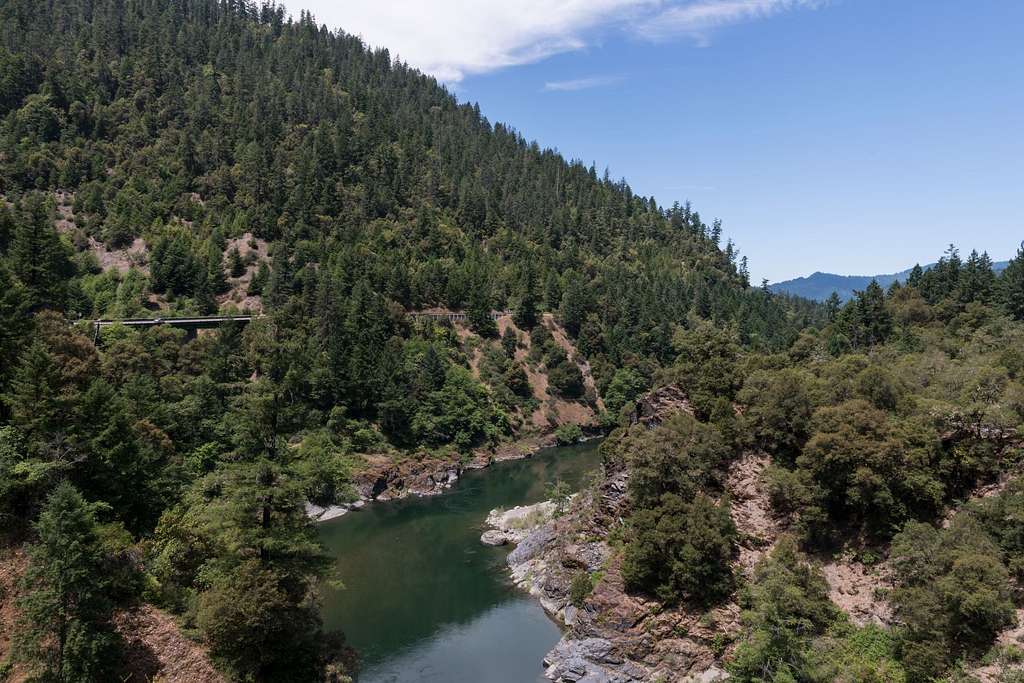Commentary written by Puanani Faleofa Kānaka Maoli (Native Hawaiian), Water and Land Protector
We need more water and land protectors. California has both a water and land crisis. Save California Salmon, HSU Native American Studies, Tribes and School Districts have just released a high school curriculum based on the 2020 Summer Speaker Series, Advocacy & Water Protection in Native California, which includes indigenous knowledge from tribal leaders and members in Northern California.
The CORE course from Module 1 of this curriculum titled “Understanding Water Policy, Law and Tribal Sovereignty” teaches us about the interconnectedness of our environment and ourselves. California experienced devastating fires and apocalyptic skies last year that initiated discussions of Native cultural burning as fire prevention. Indigenous knowledge teaches us that in order to have balanced ecosystems we need rivers to flow freely throughout land bodies to water the trees and soil. This curriculum tells us how dams block that balance. “What I have always learned is that our rivers and our waters are like the veins of a whole system that have to work together, they feed each other. We can’t just dam up an artery and expect it not to cause some kind of big effect in another part of the system. All these things are interconnected” said Dr. Cutcha Risling Baldy, Department Chair for HSU’s Native American Studies, who was a presenter in the CORE course.
The pandemic allowed us to reflect on the need for flexibility and more place-based learning within our schools. We can’t afford to continue to be confined to just one school of thought. The curriculum was developed to build a bridge for everyone, but especially our school systems, to learn from indigenous knowledge about how to care for our environment and each other. The bridge is built, it’s time to cross over it. “This is about protecting the water and defending the land. Who does that best? Who has those relationships? Indigenous peoples. Center Indigenous peoples’ perspectives, histories and goals, and we will protect the land and protect the waters” says Tia Oros Peters, CEO of Seventh Generation Fund for Indigenous Peoples.
Life’s most essential relationship is the one we have with nature. In this curriculum, students research and learn about watersheds, and traditional foods, in their area. This is a living curriculum and meant to adapt to changes in environment, policy, and also areas outside of Northern California. “Native peoples have very important relationships with our food sources. This idea of nomadic hunter gatherer is very simplistic. In reality, Native peoples have complex knowledge systems about how to work with food systems,” says Kaitlin Reed, Assistant Professor of Native American Studies at Humboldt State University, during the webinar titled “The River Feeds Us, Food Sovereignty and Community Resilience.”
What do you know about food sovereignty? Forget toilet paper, it’s essential to learn about where your water and food sources will come from during a pandemic.
Salmon is a main food source for Native tribes in Northern California, and salmon returns are at an all time low. In the activity “A Salmon’s Perspective” students imagine they are a salmon traveling upriver and downriver. We can learn many lessons from the life cycle of salmon. Adult salmon swim upriver just once to spawn and then die leaving their bodies to nourish the soils and streambeds. Salmon offspring are left to find their own way down river, to the estuary, where the river meets the ocean. It’s in this special place that salmon can change from freshwater fish to saltwater fish and then back again when they journey back upriver as adults to spawn. Our waters, lands and salmon are not just a “resource,” they are a gift, an ancestor, that must be protected. “We have a story about the salmon and about how we are related. The salmon have always been there for us. They gave us their voice. The salmon population is diminishing and we recognize that whatever happens to the salmon will happen to us” says Chief Caleen Sisk of the Winnemem Wintu Tribe.
I am a water and land protector. Indigenous knowledge brings “us” together. In Hawaii, we say Aloha ‘Āina which literally translates to love of the land, but it encompasses so much more than this literal translation. Aloha ‘Āina is a deep love and gratitude for all life. It’s knowing that we are not separate from nature. It’s celebrating Spring as a time for growth, not as a time to set our clocks back an hour to “save the day”, but to learn knowledge that will save generations. The future is now.
The curriculum is offered at https://www.californiasalmon.org/curriculum-advocacy-water-protectio or through contacting regina@califorrniasalmon.org. Teachers can register for April 2nd training at my.hcoe.net/event/advocacy-and-water-protection-in-native-california-curriculum-educators-training/.



